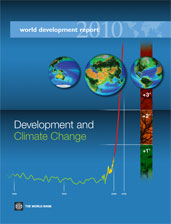Mossaic components
There are nine principle Mossaic project components; these form the 9 chapters of our book :
- Foundations: reducing landslide risk in communities
- Project inception: teams and steps
- Understanding landslide hazard
- Selecting communities
- Community based mapping for landslide hazard assessment
- Design and good practice for slope drainage
- Implementing the planned works
- Encouraging behavioral change
- Project evaluation
While seven are sequential, two (encouraging behavioral change and project evaluation) are cross-cutting components relevant from the start of any proposed Mossaic intervention, and continuing through to the post-project period. The nine components can be subdivided into a series of steps that deliver Mossaic, and which provide the framework for each chapter.

The World Development Report 2010, published by the World Bank, includes Mossaic as a case study (page 327) and gives the following summary of the components and methodology:
“End-to-end community engagement for landslide risk reduction in the Caribbean. A new way of delivering real landslide risk reduction to vulnerable communities was piloted by MoSSaiC, a program aimed at improving the management of slopes in communities in the eastern Caribbean. MoSSaiC identifies and implements low-cost, community-based approaches to landslide-risk reduction, in which community residents indicate areas of perceived drainage problems before assessing options for reducing landslide risk by managing surface water. The activities? Managing surface water in all forms (roof water, grey water, and overland flow of rainfall water), monitoring shallow groundwater conditions, and constructing low-cost drain systems. All the work is bid out to contractors in the community. This end-to-end community engagement encourages participation in planning, executing, and maintaining surface water management on high-risk slopes. It produces a program owned by the community rather than imposed by the agency or government. MoSSaiC has lowered landslide risk by offering the community employment and risk awareness—and has taken a participatory approach to rolling out the program to other communities. The program shows that changing community views of hazard mitigation can enhance community perceptions about climate risks. It also establishes a feedback loop between project inputs and outputs, with more than 80 percent of funds spent in the communities, allowing communities and governments to establish a clear link between risk perceptions, inputs, and tangible outputs.”
